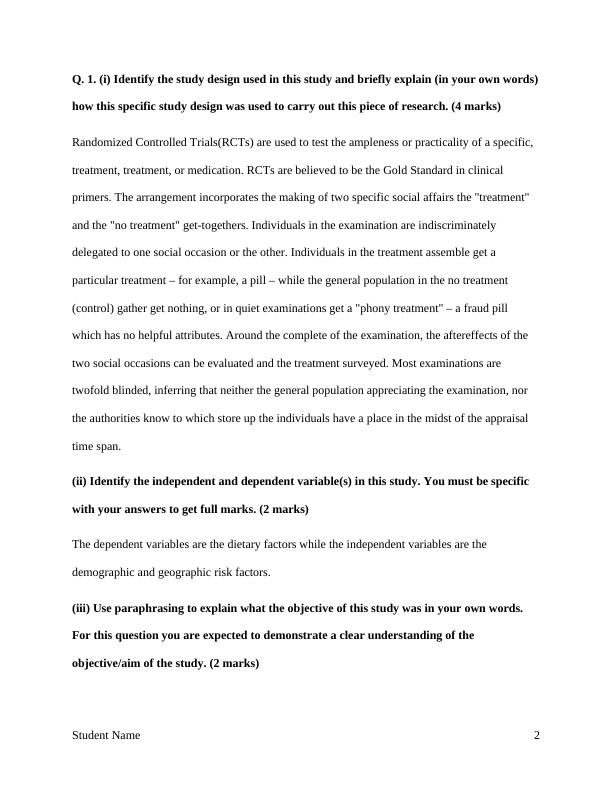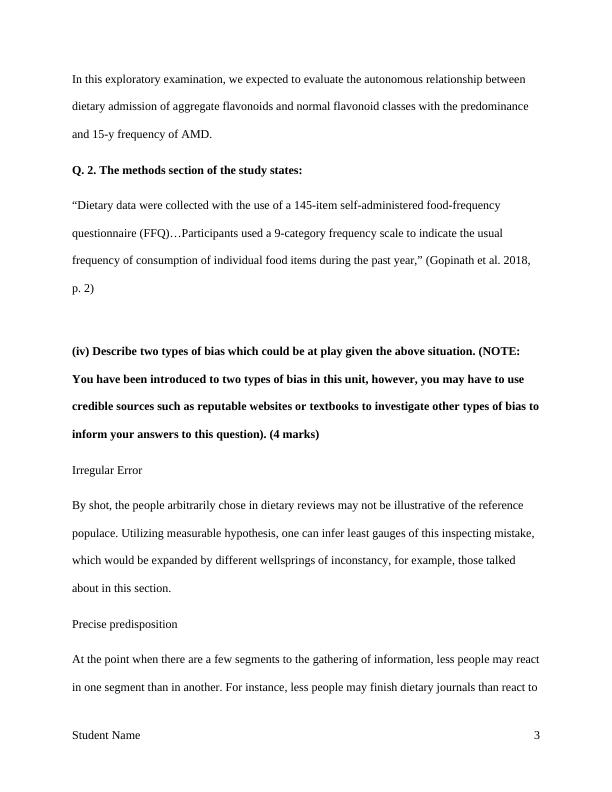Exploring the Relationship between Dietary Flavonoids and AMD
This assignment requires accessing, understanding, interpreting, and reporting on findings from qualitative and quantitative research studies.
12 Pages3001 Words296 Views
Added on 2023-06-07
About This Document
This study examines the relationship between dietary flavonoids and AMD, using a randomized controlled trial design. The study identifies the independent and dependent variables, and controls for confounding factors. The odds ratios and confidence intervals are analyzed to determine statistical significance. The study suggests that oranges may protect against AMD. The Bradford-Hill test is applied to assess causation. A proposed study design for future research is discussed, along with practical and ethical challenges.
Exploring the Relationship between Dietary Flavonoids and AMD
This assignment requires accessing, understanding, interpreting, and reporting on findings from qualitative and quantitative research studies.
Added on 2023-06-07
ShareRelated Documents
End of preview
Want to access all the pages? Upload your documents or become a member.
Statistical Methods in Epidemiology (401176)
|4
|1347
|268
Impact of Training on Employee Retention - Business Research Methods
|7
|1611
|336




